When you think of furniture, you think of pieces made using the most traditional materials. We are conditioned to associate furniture primarily with wood, plastic, and metal. In the meantime, product designers explore the potential of cardboard as a material for short-use furniture, creating designs that are light, portable, and easy to assemble.
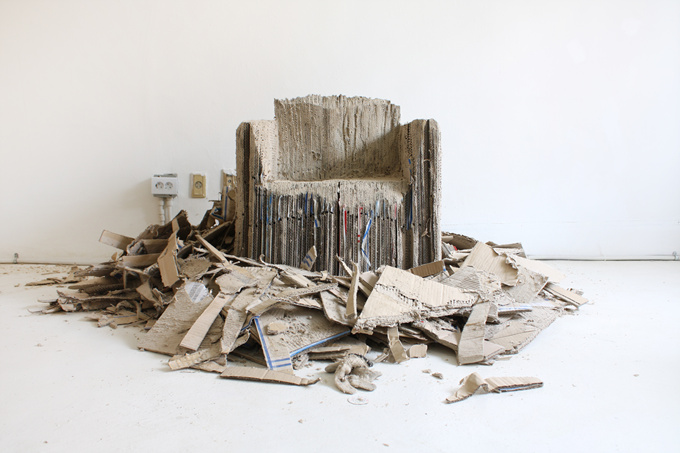
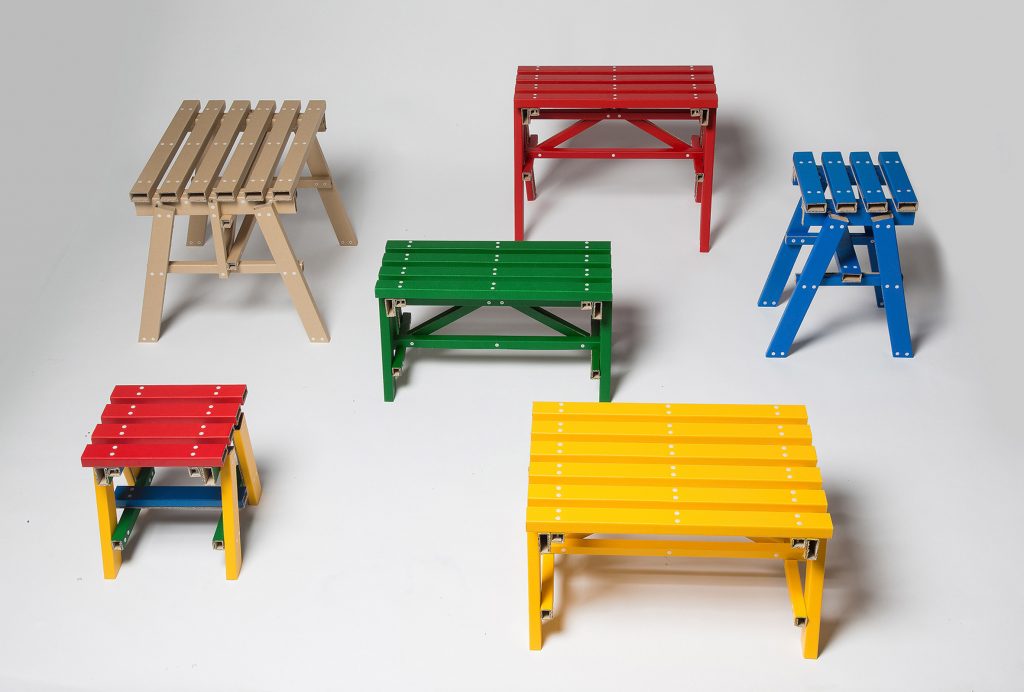
Lumber by PESI
Seoul-based studio PESI (an acronym for Possibility, Essential, Standpoint and Interpretation) has designed a collection of eleven side tables utilizing planks of simple processed cardboard that have the appearance of wood. Named Lumber, the tables are designed to be easily assembled and, once no longer needed, disposed of.
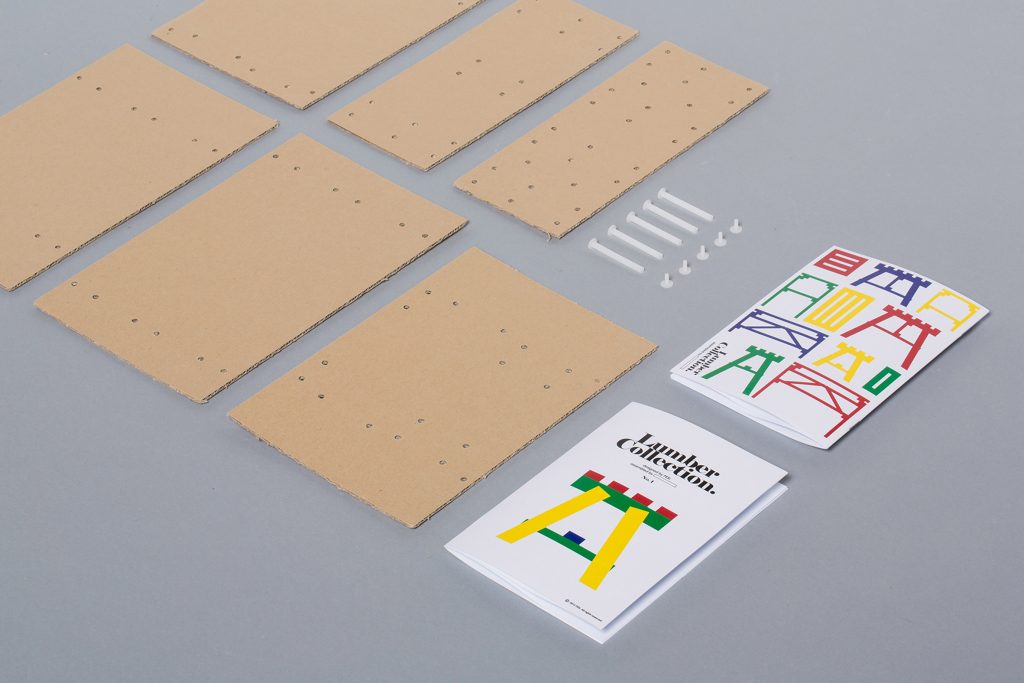
Lumber by PESI
The studio wanted to find a new formative language in cardboard furniture, which is commonly folded like ‘orgami’ or laminated with layers. To cut sections for the Lumber table, they turned to the die-cutting press, one of the standard methods for processing cardboard. After that, the processed cardboard was rolled and squared to look like a rectangular lumber and assembled using only PVC rivets.
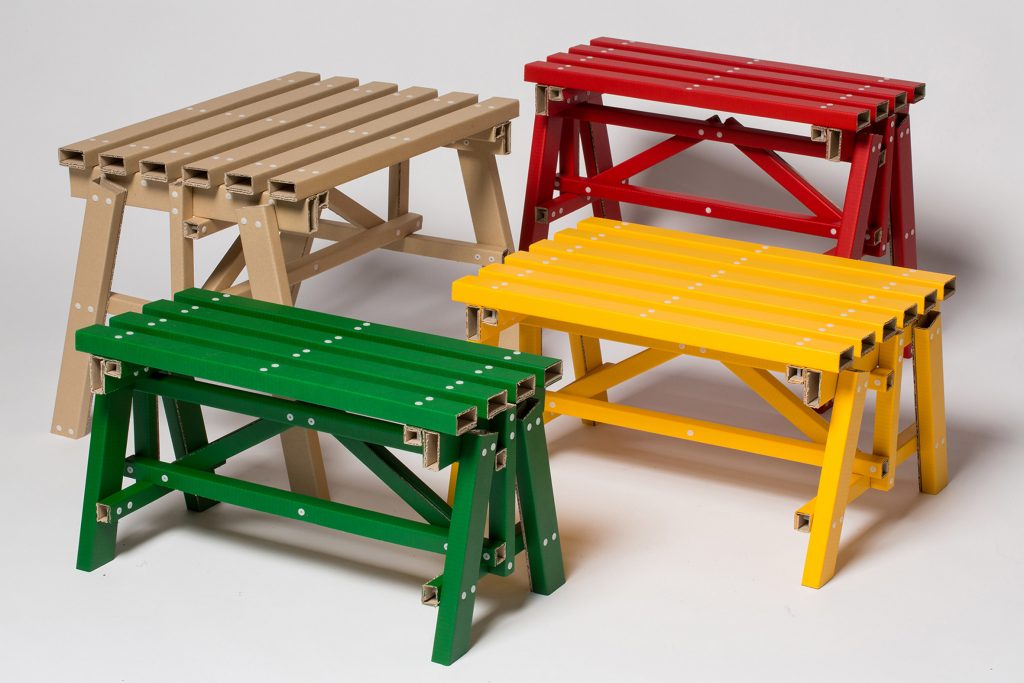
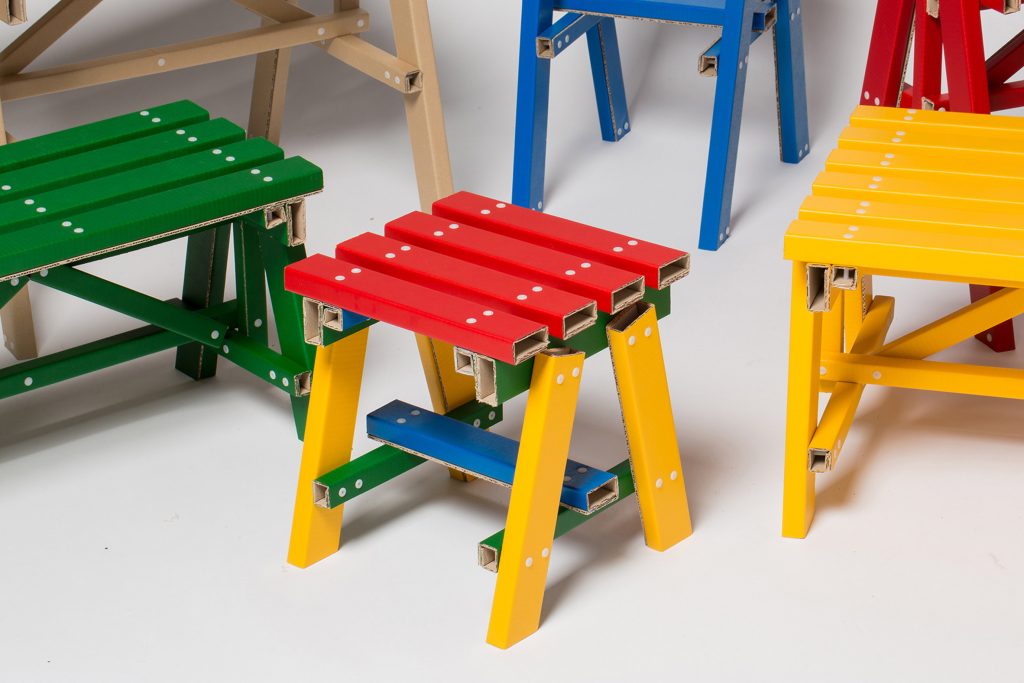
Lumber by PESI
A total of eleven types of rectangular lumbers made by cardboards can be combined in various ways to form six types of tables, that vary in length and height. The “lumbers” are available in an array of various colours, and patterns can be freely printed on them, which makes it possible for the users to create new colour combinations.
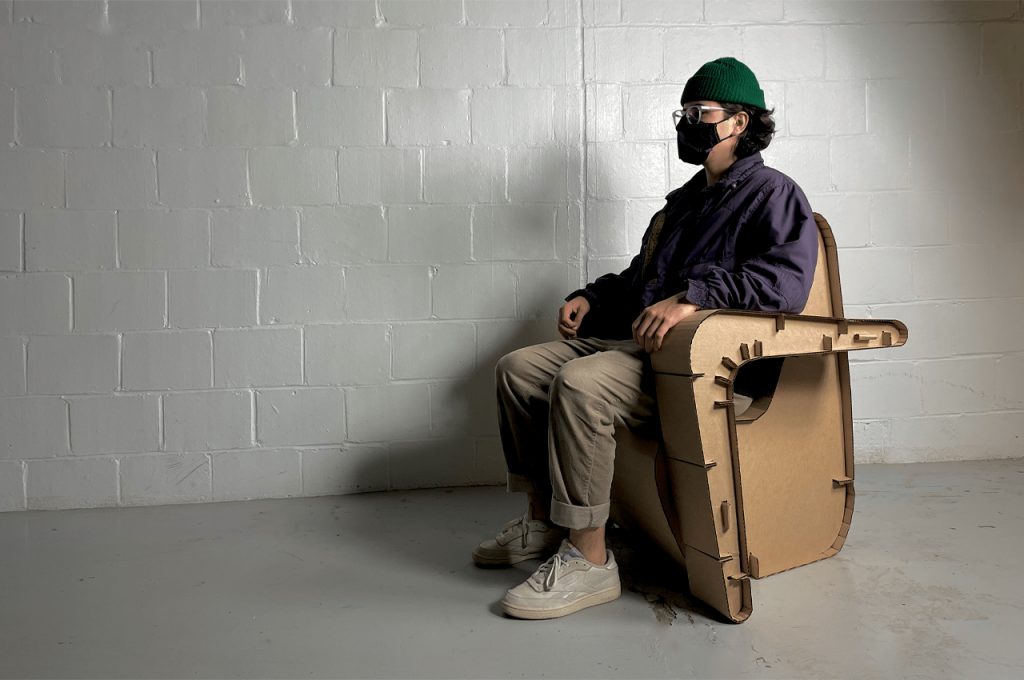
C-Chair by Lissette Romero
Designer Lissette Romero has conceptualized a cardboard chair using a set of criteria collected from client interviews and anthropometric measurements. The piece named C-Chair is built from 5 4’x4’ sheets of single-ply corrugated cardboard and requires no hardware, fasteners, or adhesives for construction or assembly.
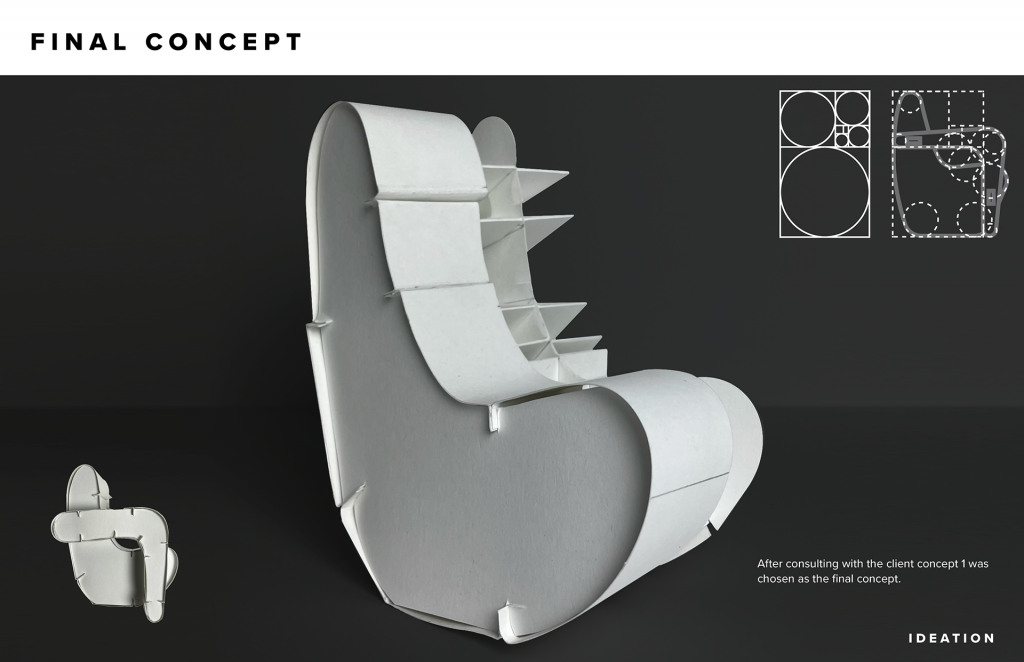
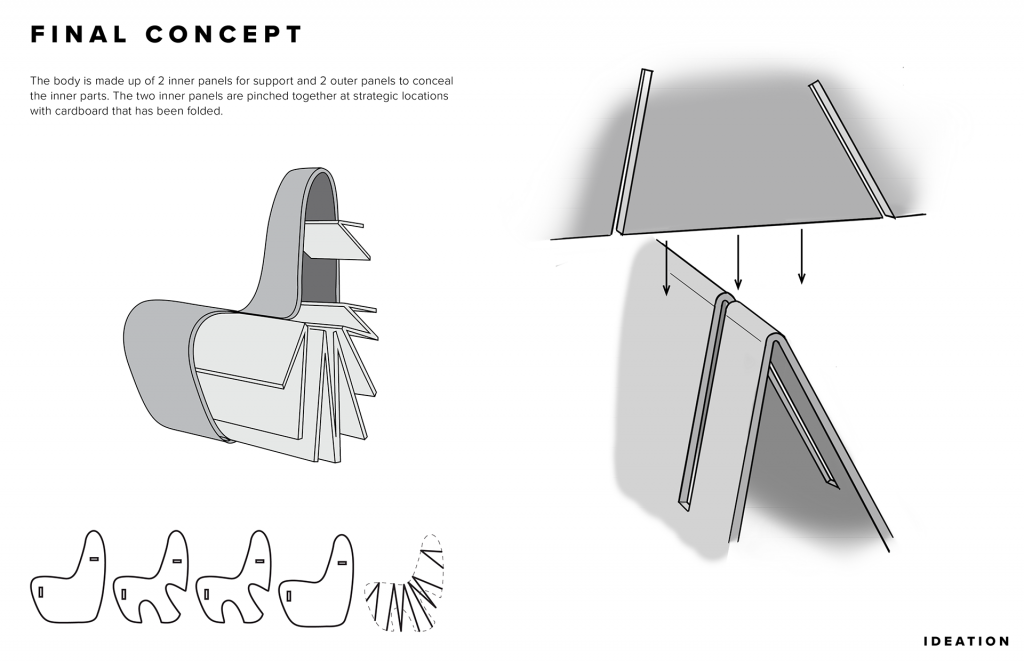
C-Chair by Lissette Romero
Before settling on the chair’s overall structure and ergonomics, Romero conducted an interview with the client to determine each the furniture’s main function according to the sitter’s tasks that they will be performing while seated. Romero discovered that the client needed a chair that has a shorter profile, a good backrest, comfortable armrests, a cup holder, and a place to prop up his iPad.
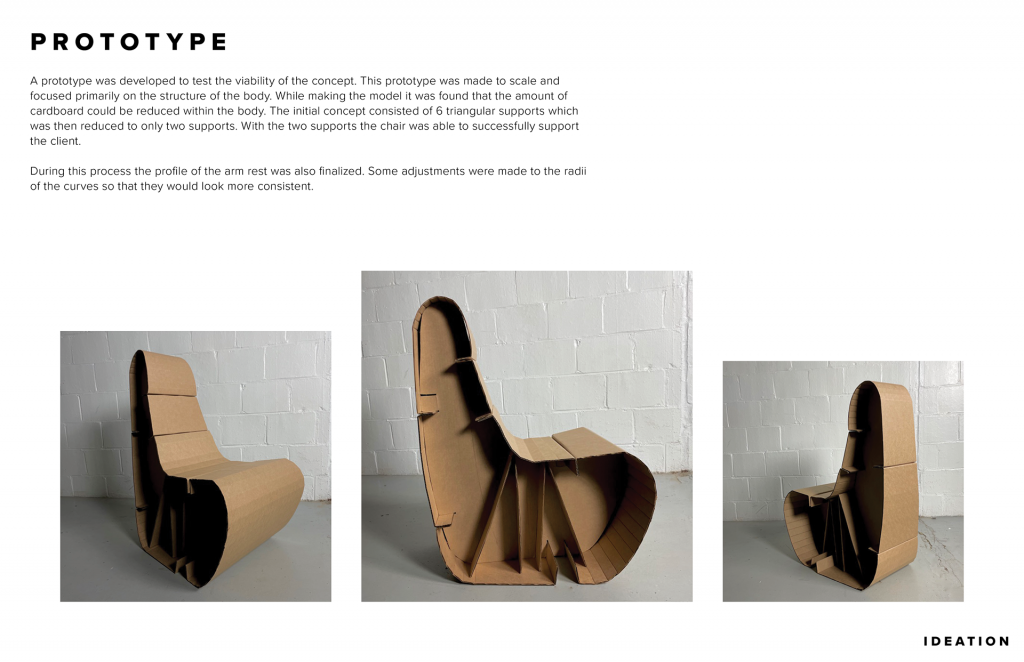
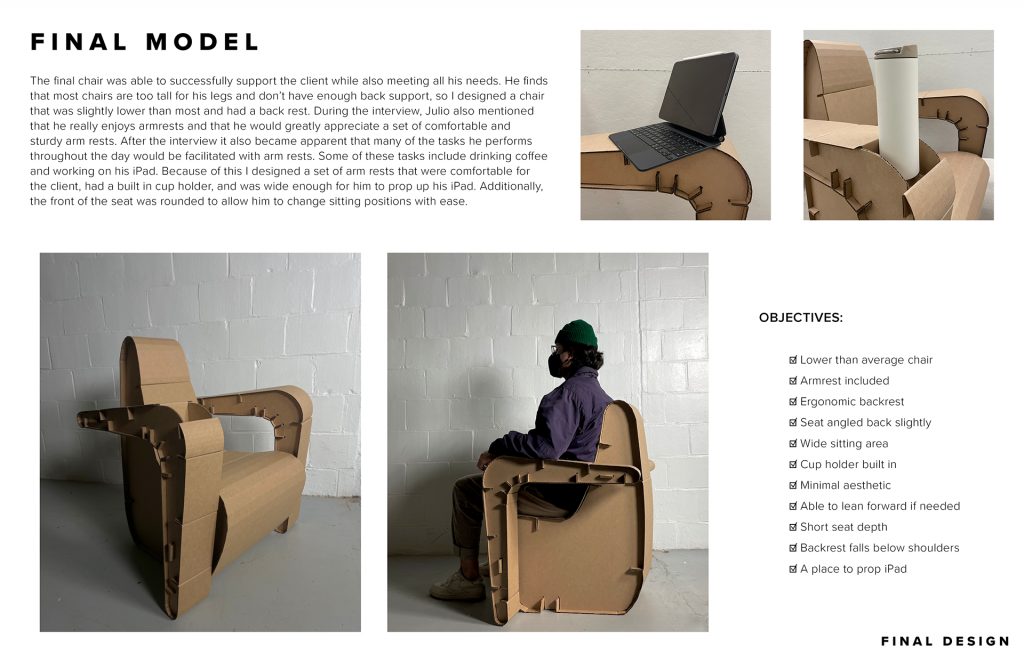
C-Chair by Lissette Romero
The chair was then tailored to the client’s body measurements and personal aesthetic. During the ideation phase, Romero prototyped three different conceptual chair designs, each of which takes on different design languages. The client ultimately decided on a chair with a round form language, large armrest, body frame tapered in two directions, a backrest that falls just below the shoulder blades, and integrated cardboard beams that connect everything together.
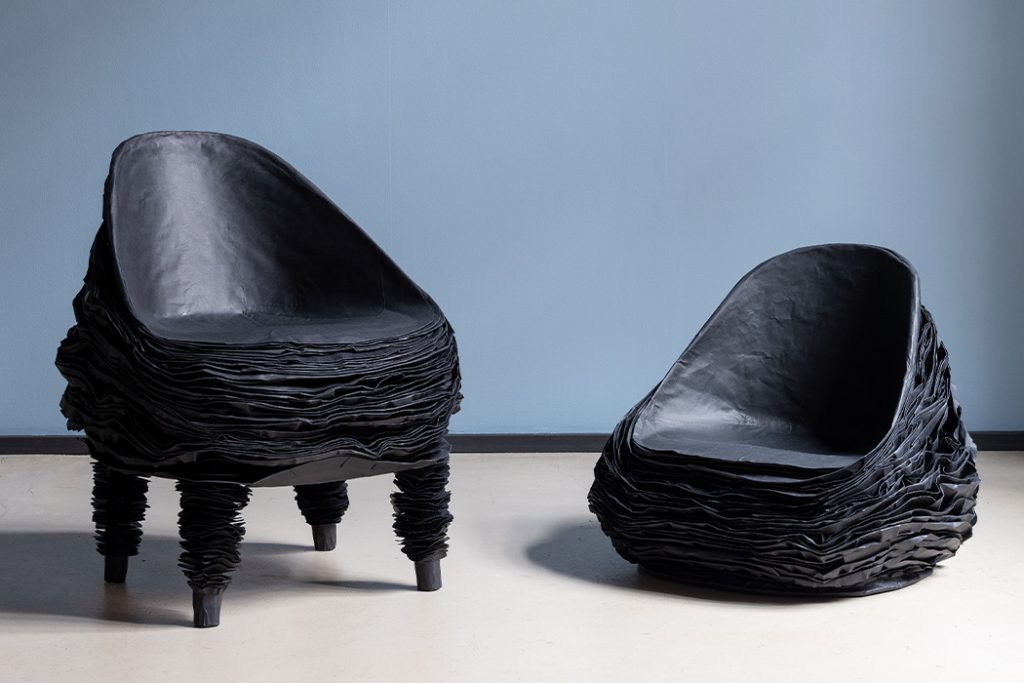
Paper Furniture by Vadim Kibardin
Prague-based designer Vadim Kibardin spends 5,110 hours making furniture from paper by hand. He believes that using sustainable construction materials like paper and turning it into furniture that is stylish, modern and eco-conscious is the future of long-lasting interior design.
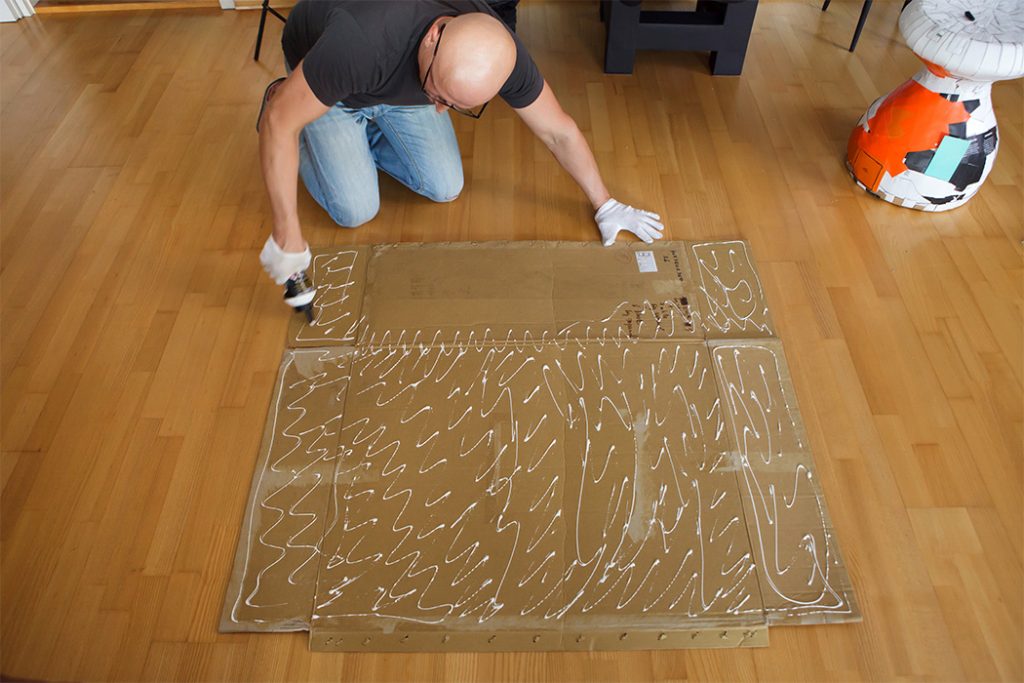
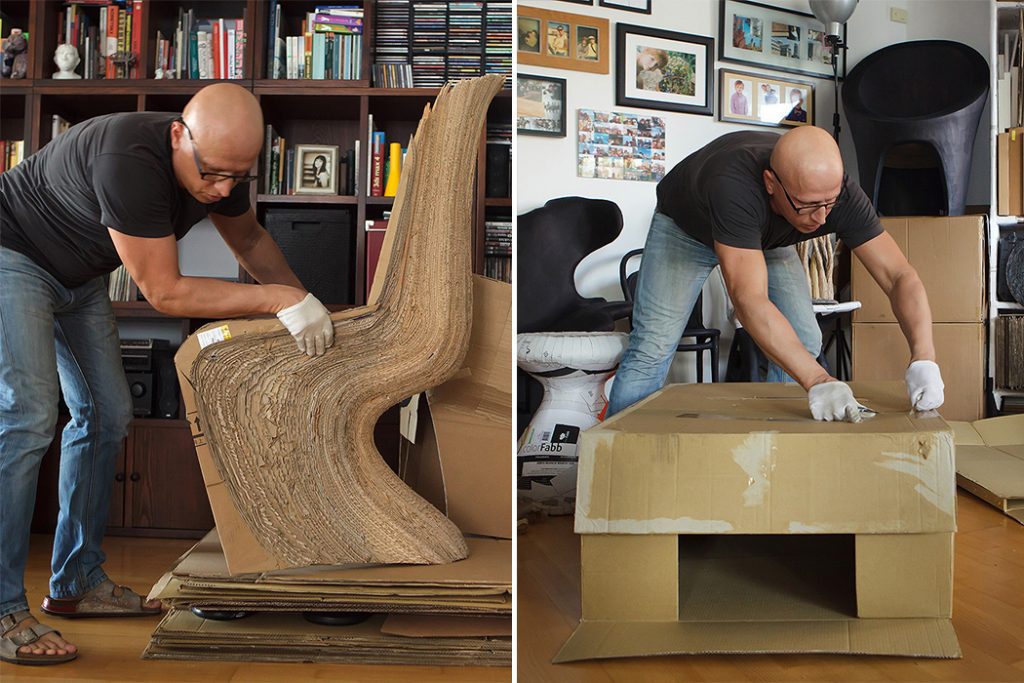
Paper Furniture by Vadim Kibardin
The process is very much like paper-mache technique. For over 25 years, Kibardin has successfully recycled 2000 pounds of cardboard which is equivalent to saving 17 trees.
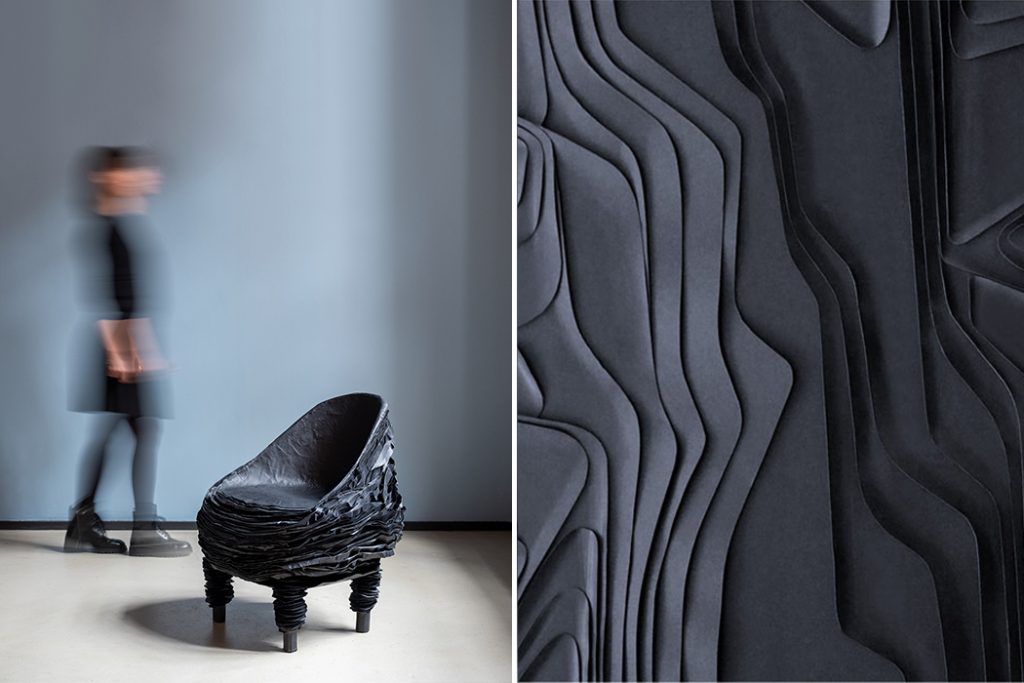
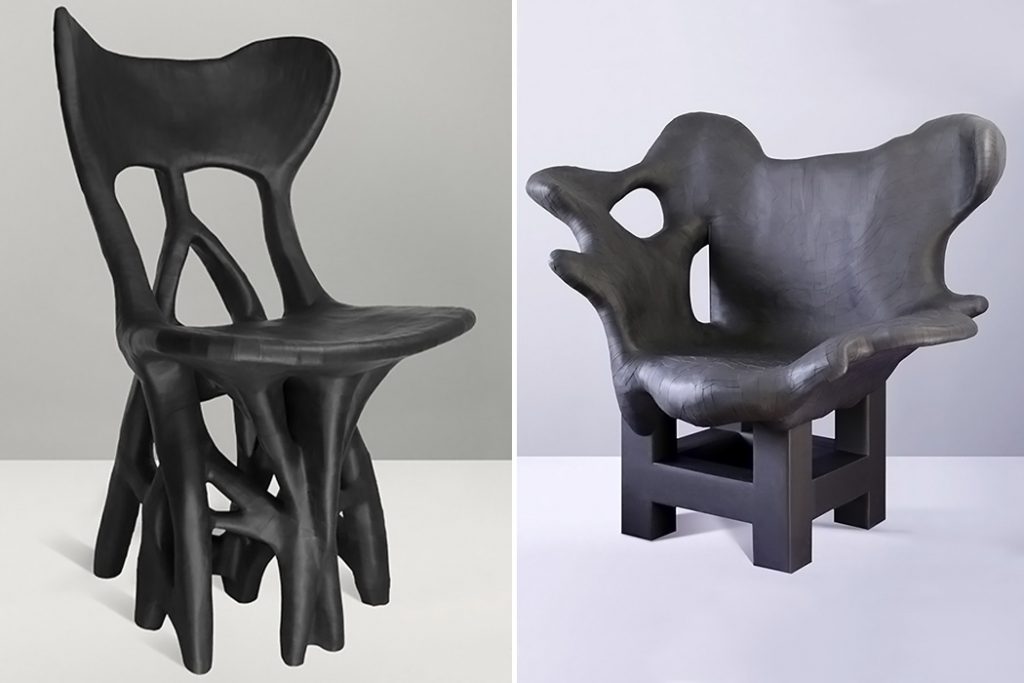
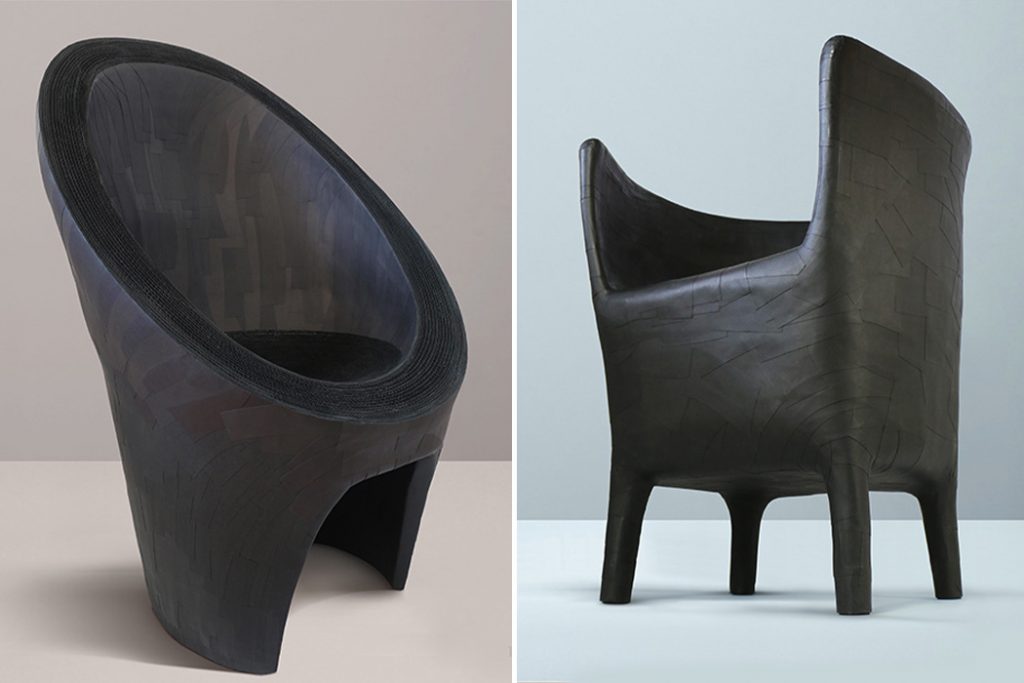
Paper Furniture by Vadim Kibardin
Header image: Sculpture Project by Monocomplex design studio